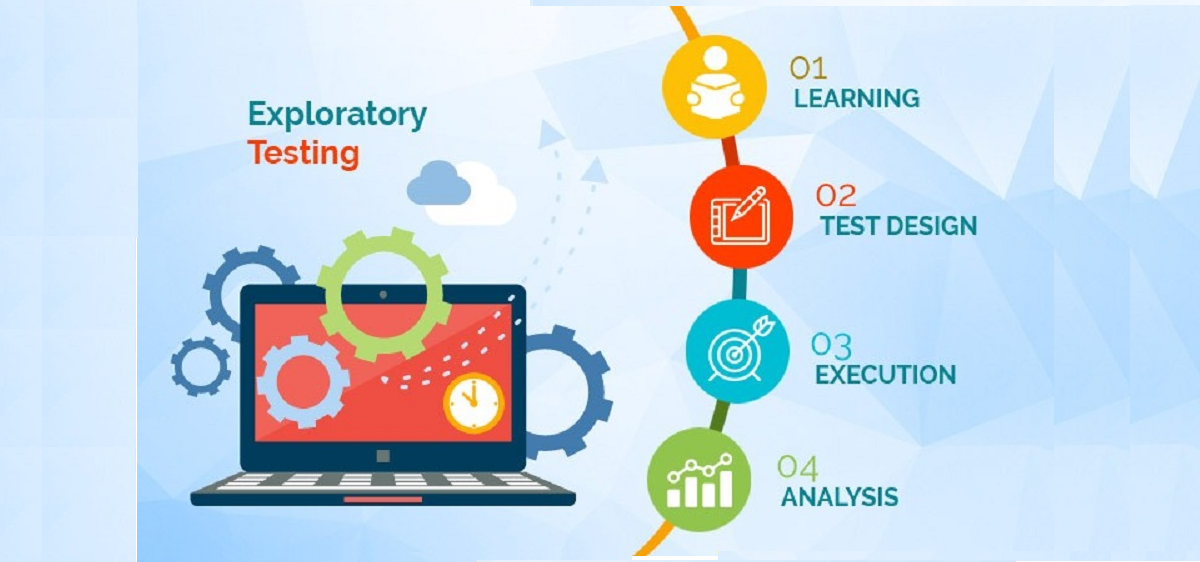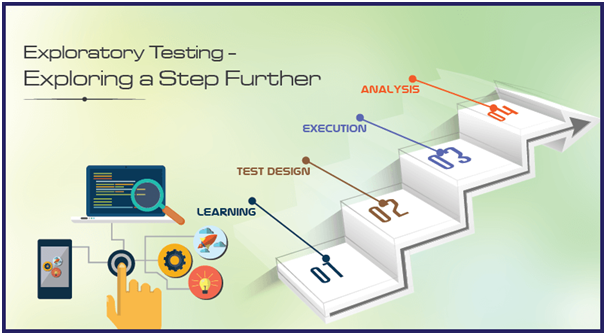
The first thing that comes to mind after hearing about ‘exploratory’ testing is Ad Hoc Testing. But there’s a difference between the two. Exploratory testing is a ‘thoughtful approach’ of testing that involves simultaneous learning, test schematizing, and test execution, unlike ad-hoc testing, which involves wandering through an application looking for bugs.
Exploring the software to discover its functionalities and drawbacks is what exploratory software testing does. So, this is a formal testing process that doesn’t rely on test cases or test planning documents to test the application. Instead, testers go through the application and learn about its functionalities. They then, use exploratory test charters to direct, record and keep track of the exploratory test session’s observations.
Our charter process is conducted very meticulously by some of our best professionals.

We then proceed to design and record a consistency verification test.
Exploratory testing, as a process, includes the phases of discovery, investigation, and learning. The best way to go about it is to explicitly define and maintain test charters and record the observations within a conducted test. It is a hands-on procedure in which testers perform minimum planning and maximum test exploration.

– The planning phase comprises the formulation of a charter plan for a short time-boxed test effort. In this, we outline the objectives and possible approaches to be used during that period.
– In the scope of the charter design and execution of tests are performed simultaneously without any formal documentation for the test codes, conditions, or cases.
– Moreover, Test logging is performed along with these dynamic test cases. During this, we record the key aspects of the tested areas, any errors found, and any opinions regarding further testing.
– Exploratory testing helps developers to make sure that the most severe cracks have been recognized and filled.
As mentioned above, in exploratory testing, the quality is completely dependent upon the tester’s skills. The testing quality relies upon the testers’ knowledge about the product, their scrutinizing skills, and the different testing techniques.
Here are The Skills They Must Possess:

An exploratory tester should know of the test design method which best suits the product. He must be proficient in the methods of testing that he implements, in any kind of testing. He should be able to use different tools, evaluate risks, examine the product, and think critically.
It is very important to observe more than what the basic functionality tells them, like looking out for any unusual or obscure behavior in the system.
To be a good exploratory tester, you need to be a good critical thinker because it can save projects from speculative assumptions and ultimately from failures. Excellent exploratory testers should be qualified enough to review and explain their logic and look for errors in their own thinking.
Exploratory testers also have to think and brainstorm a lot in order to find the weak areas. They use documents, guidelines, checklists, and other important indications.
Exploratory Testing has become really popular as a method of testing, in the recent years. It is highly effective in terms of finding defects and improving the product’s code and functionality. Thus, it’s safe to use the method of Exploratory Testing while testing software as it will ensure you get the best results.
Webomates is amongst the top companies providing these services. Get in touch with us today and revolutionise your testing procedures
At the forefront of modern software quality assurance, Webo.ai by Webomates is transforming how teams approach testing—bringing together the power of AI, automation, and exploratory testing. With intelligent test case generation, continuous validation, and real-time insights, Webo.ai empowers QA teams to test faster, smarter, and more efficiently. Start Free Trial Now
Exploratory testing complements automation by focusing on uncovering unexpected issues that automated scripts might miss. While automation handles repetitive tasks, exploratory testing allows testers to use creativity and intuition to identify defects in areas not covered by automated tests.
A test charter is a brief statement outlining the scope, objectives, and approach for an exploratory testing session. It guides testers on what to focus on during the session, ensuring structured exploration without predefined test cases.
Despite its unscripted nature, exploratory testing is structured through defined objectives, time-boxed sessions, and documentation of findings. This approach ensures systematic exploration and accountability.
Yes, exploratory testing can be applied to non-functional areas like usability, performance, and security. Testers can explore these aspects to identify issues that may not be evident through scripted tests.
Findings are documented through session notes, screenshots, and defect reports. Tools like mind maps or test management systems can help organize and share insights gained during exploratory sessions.
Tags: Charter, Exploratory testing, Process
Leave a Reply